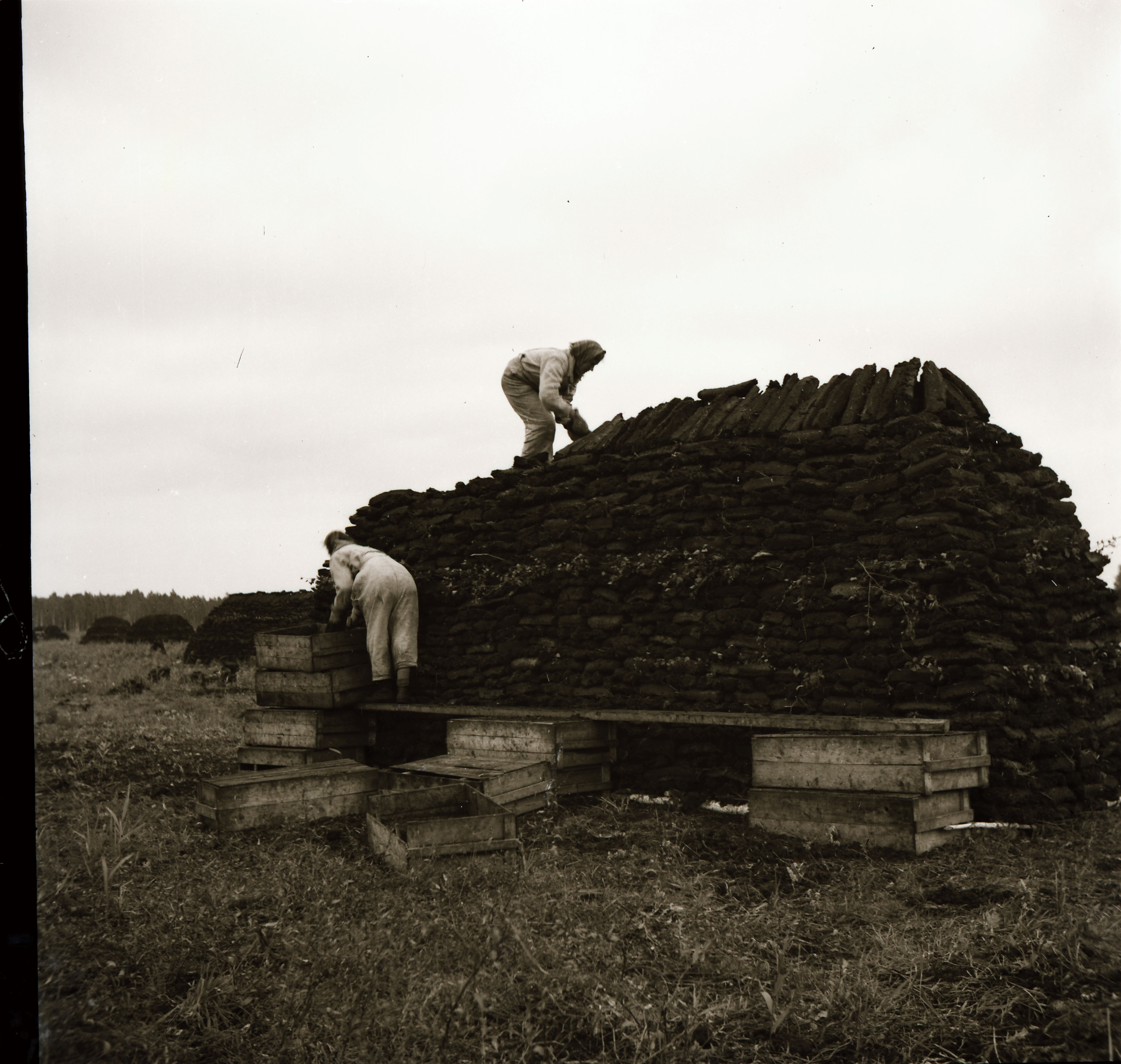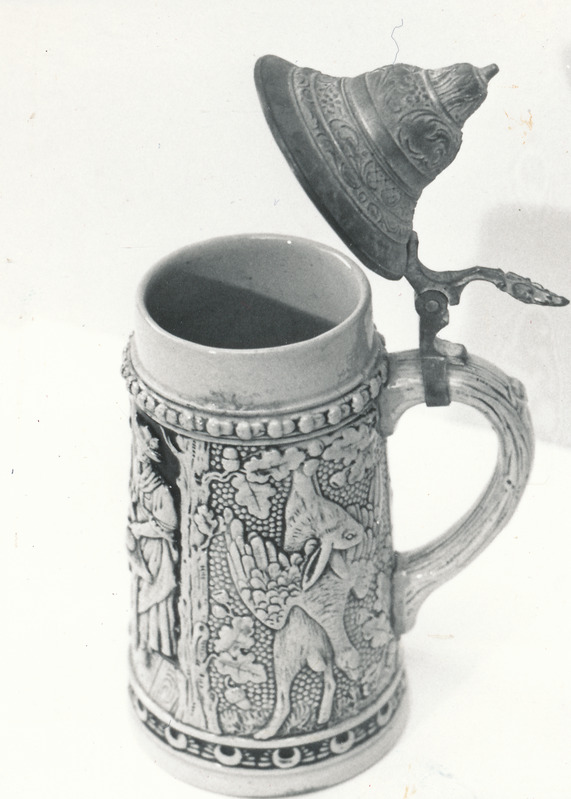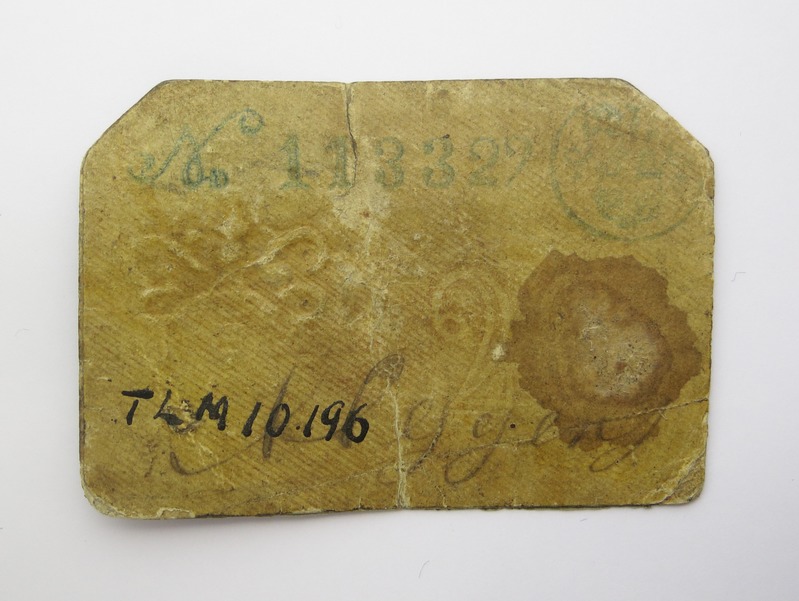Bogs, marshes
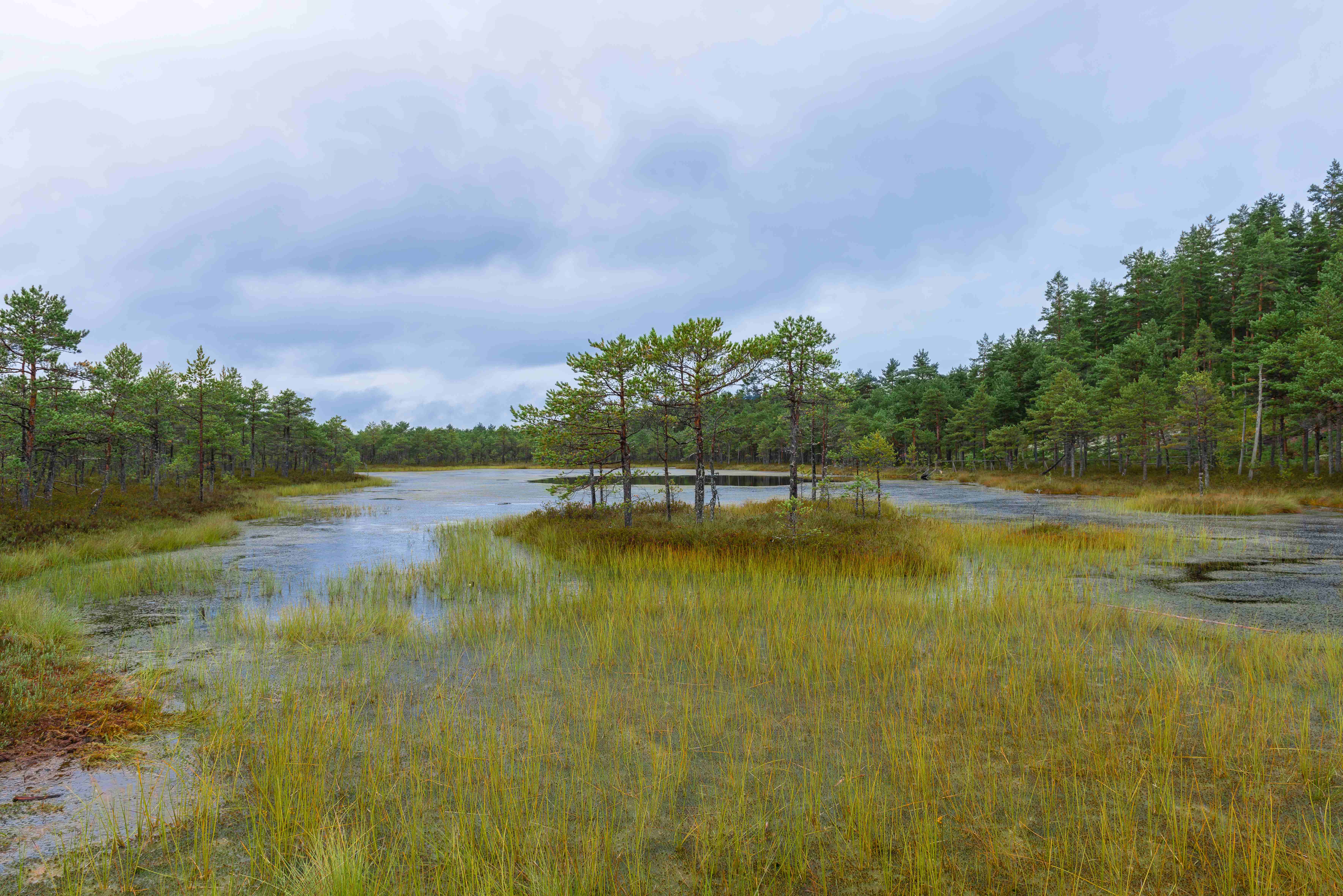
https://et.m.wikipedia.org/wiki/Fail:Meenikunno_raba_laukad.jpg
Tõresoo is a large marshland with a few pines and water puddles two kilometers from Aakre manor. In the past, it had been one of the most feared places.
It was about 120 years ago when Anik E..., a resident of Aakre municipality, came from the village of Voore. He had just reached the Tõresoo bridge when he saw a terrible picture before his eyes: a frightful man was sewing his fur coat with a horse's shin bone. The old man was so stiff with fear that he could hardly move when he saw such a thing. He immediately began to recite the "Our Father" prayer to overcome his fear. He had barely crossed the bridge when his horse’s shaft bow sprang away.
Anik, however, climbed down from the carriage and started looking for it. He searched and searched but couldn't find the shaft bow. Finally he crossed the ditch into the forest and – beheld a miracle, the shaft bow is there! But when he picked it up, the old man lost heart entirely, because a small black dog had jumped out from under the shaft bow and disappeared into the water under the bridge.
After that, Anik harnessed the horse and got home happily.
Aakre mõisast kahe kilomeetri kaugusel on Tõresoo. Vanasti oli see olnud üks kardetavamaid kohti. Suur mädasoo, üksikute mändide jja veeloikudega.
See oli umbes 120 aastat tagasi, kui Anik E…, Aakre valla elanik, tuli Voorelt külast. Parajasti jõudis ta Tõresoo sillale, kui nägi oma silme ees kohutavat pilti. Hirmus mees õmbles hobuse sääreluuga oma kasukat. Vanake oli hirmust nii kange, et ta vaevalt sai ennast liigutada, kui nägi sellist pilti. Kohe hakkas ta „Meie Isa“ palvet lugema, et hirmust võitu saada. Vaevalt oli ta üle silla jõudnud, kui hobusel karanud look pealt ära.
Anik aga roninud vankrist maha ja hakanud looka otsima. Otsinud ja otsinud, aga ei leidnud. Viimaks läinud üle kraavi metsa ja näe imet, look ongi seal. Aga looka üles võttes heitus vanake hoopiski ära, sest looga alt oli karanud välja väike must koer ja kadunud silla alla vette.
Pärast seda pani Anik E… hobuse ette ja sai õnnelikult koju.
And the second story happened right there, shortly after the first.
Once Alek V... went home through the bog of Tõresoo at midnight. He heard how the ice was being broken, crack, crack! He stayed to watch and saw that a very naked man was breaking the ice. Soon the hole was ready and then the man jumped into the water, making yet more bubbles, and was at the bottom. Alek got scared and made fast his escape from Tõresoo!
Currently, the majority of this swamp has already dried up. In some places even thicket has grown on it and in some places it has been cultivated. But people who have heard these stories still have a certain fear when going through this bog.
Ja teine lugu juhtus sealsamas, varsti pärast esimest.
Kui ükskord Alek V... südaöösel läks läbi Tõresoo koju. Kuuleb, kuidas lõhutakse jääd, ikka praks ja praks! Jääb vaatama ja näeb, et päris alasti mees raiub jääd katki. Varsti sai augu valmis ja siis karanud karsummdi vette, teinud veel mõne mull... mull... ja olnudki põhjas. Alekseil tulnud hirm peale ja vaadanud, kuidas Tõresoost välja saab!
Praegu on see soo enamuses juba ära kuivanud, mõnda kohta on isegi padrik peale kasvanud ja kohtai üleski haritud. Aga inimestel, kes neid jutte kuulnud, on ikka teatud hirm sellest soost läbi minnes.
In the past, a part of Silminitsa forest under Toostõ village was called Üllimä bog. This forest was on such a soft and muddy land that not even proper pines grew there. When the ditches were dug in, the swamp dried up and a forest began to grow on it.
In the old days, this bog was so splashy that it didn't support people. There went no-one else, except the berry people.
Once, during berry picking season, a girl drowned in the bog. Since she was from the Üllimä family, Jaamaküla village, the bog was named Üllimä bog after her.
Ennemalt kutsuti üht osa Silminitsa metsast Toostõ küla all Üllimä soo. See mets oli nii mädal1 maal, et seal ei kasvanud õigeid mändegi. Kui kraavid sisse tõmmati, siis sai soo kuivaks ja seal peal hakkas mets kasvama.
Vanasti olnud see soo nii mäda, et ei ole õieti inimestki kandnud. Seal ei käinud ka kedagi muud, kui ainult marjulised. Sinna sohu olevat marjakorjamise ajal üks tütarlaps ära uppunud. Et tütarlaps olnud Jaamaküla Üllimä perest pärit, siis hakatud seda sood kutsuma Üllimä soo.
Vanamõisa marsh used to be a big lake. The lake always drowned a lot of people. One day a little girl with a moss wreath on her head walked around the lake and sang:
Let the lake be marsh and the water be moss,
let the pines grow on the moss!
Immediately the lake petrified into a marsh. Pine trees are still growing on the marsh.
Vanamõisa raba olnud enne suur järv. Järve uppund alati palju inimesi. Ühel päeval käis väike tüdrük, samblast pärg peas, ümber järve ja laulis:
Järvest sooda, veesta sammal,
sambla pääla männida!
Kohe kivistus järv sooks. Sool kasvab praegu männik.
Here are Kuradisoo ja Põrgulaas – "Devil Bog" and "Hell Forest". People often got lost there. There was something strange in Hell Forest.
Siin on Kuradisoo ja Põrgulaas. Seal olevat inimesed ikka ära eksinud. Seal oli midagi kahtlast – Põrgulaanes.
An old road passed through the grove of Vitipalu. One thicket in Vitipalu is called Soesoo – “Wolf’s swamp”. The road also passed through Soesoo. Vitipalu is located in Hellenurme municipality in Kutsari ward.
Once at night, a farmer drove along this road. The farmer noticed that a wolf came out of Soesoo and jogged slowly behind the sleigh. The horse started to get scared and ran harder, but it was still on his heels. However, the wolf did not bother either the animal or its owner.
The farmer saw that a white man was standing by the side of the road, and the thought flashed through his head that it might be a revenant. When the wolf reached the place where the ghost stood, it rushed at him. At that moment the wolf turned into a pillar of fire and set the revenant on fire like a bright flame. The frightened farmer went home and told everyone about the extraordinary event.
Generally, there were a lot of wolves living in the forest, that's why this swamp was called Soesoo – “Wolf’s swamp”.
Vanasti käinud maantee läbi Vitipalu. Vitipalus ühte tihnikut kutsutakse Soesooks. Tee käinud ka läbi Soesoo. Vitipalu asub Hellenurme vallas Kutsari vahtkonnas.
Kord öösel sõitnud seda teed mööda keegi talumees. Talumees märganud, et üks susi tuli Soesoost välja ja sörkinud aeglaselt ree taga. Hobune hakanud kartma ja pistnud kõvemini jooksma, aga susi ikka kannul. Kuid susi ei ole loomale ega ka peremehele külge tikkunud.
Talumees näinud, et keegi valge mees seisab tee ääres, talumehel sähvatanud mõte läbi pea, et see on ehk kodukäija. Kui hunt jõudnud kodukäija kohale, tormanud susi kodukäija kallale. Sel hetkel muutus hunt ehk susi tuleks ja kodukäija puusambaks, ning löönud heleda leegina põlema. Ehmunud talumees läinud kodu ja rääkinud kõigile erakordsest sündmusest.
Üldse seal metsatukas elutsenud palju susisid ehk hunte, seepärast hakatigi seda sood kutsuma Soesooks.
In the old days, gypsies stole a horse while passing through the village of Kanaküla, but with a great effort the farmer got his horse back from them. The gypsies managed to escape towards Kikepera swamp with their skin intact, although whilst the farmer was still full of heart, he cursed after them: "May the Old Pagan take you too."
The storm was very terrible when the gypsies came out of Longi forest, down to Laiakivi, and came across the large open clearings of Kikepera and Lage swamps. Because the gypsies were afraid of being chased by the farmers, they thought it better to cross the swamp to the village of Veikseküla and rest there. For a long time, they wandered around the Kikepera and Lage marshes looking for a way to reach the village, but because of the blizzard, they could not find it. Getting lost and wandering like this, they found themselves many times back at Laiakivi, from where they continued to travel with new momentum. At last the night came and the gypsies were tired to the core and lost – because of the Old Pagan. It was decided to stay in a lodge in the Lage swamp, where the camp was set up and they huddled close to each other as they felt the cold - and finally froze in the wind driven snow.
When the snow melted, hunters found twelve corpses of gypsies in the swamp. However, the people were saying that the Old Pagan had led them astray because of the curse of the farmer which had happened in Kanaküla, after the gypsies had stolen the farmer's horse.
There have also been cases before and later where some people had died in the Kikepera and Lage swamps.
Vanal ajal olnud mustlased Kanakülast läbisõidul hobuse varastanud, kuid talumees saanud ometi mustlaste käest suure kurjaga oma hobuse kätte ja mustlased pääsenud terve nahaga Kikepera sihis põgenema, kuna talumees veel südametäiega järele sajatanud: „Võtku teid ka vanapagan ise!“
Ilm olnud kuri ja sajune ning tuiskanud, et maad ega taevast ei näinud. Torm olnud väga kohutav, kui mustlased Longi metsast välja Laiakivi alla jõudnud, kui vastu aegutanud1 suured lagedad Kikepera ja Lagesoo. Et mustlased talumeeste tagaajamist kartnud, siis arvanud nad paremaks üle soo Veiksekülla jõuda ja sääl puhata. Kaua aega rändanud nad Kikepera ja Lagesood mööda ringi ja otsinud eksides teed külasse jõudmiseks, kuid suure tuisu pärast ei leidnud nad seda. Nii eksides ja rännates leidnud nad endid mitu ja mitu korda Laiakivi all tagasi, kust uue hooga edasi rännati. Viimaks jõudnud öö kätte ja mustlased ihu-hingeni väsinud ning vanapaganast eksitatud. Võetut nõuks Lagesoosse öömajale jääda, kus leer ülesse löödud, kuhu nad külma tundes üksteise ligi hoidunud ja viimaks nii tuisust kokku aetud lumeange sisse külmanud.
Kui lumi sulanud, leidnud jahimehed soo seest kaksteiskümment mustlase laipa. Rahva suus kihanud aga jutt, et vanapagan neid oli teelt ära eksitanud talumehe needmise tõttu, mis sündinud Kanakülas, kui mustlased talumehel hobuse ära varastanud.
Ka varem ja hiljem olnud juhtumisi, kus Kikepera ja Lagesoo sees mõned inimesed õnnetumat surma saanud.
1 haigutanud
In the past a small forest called Rästa peat bog was located on the land of Rästa farm. That's why it got its name, because peat was cut from the forest there. This forest is located in Laguja village in Pangodi municipality. A road passed through the forest in old times, and it is said that ghosts also lived there. At night, neither women nor children dared to pass through it. It is said that these ghosts also made fires on Midsummer night.
Once, when a woman went through the forest before evening, she saw a German noble woman standing by the road in white clothes. The woman got scared and silently read the "Our Father" prayer before going on; and then, saying: "God is with me," she grabbed the white woman. As soon as her hand touched her clothes, the ghost turned into rough birch bark. The woman went home and told others about this story.
Another time, the ghosts appeared again as humans and attacked a farmer while he was taking home-made vodka to town. The ghosts took the vodka and ran into the forest.
Now, however, this forest has been mostly cut down and there is only a small patch left, which still bears the name Rästa peat bog.
Ennemuiste asunud Rästa talu maa peal väike metsake, keda kutsutud Rästa turbasooks. Seepärast sai ta selle nime, et sealt metsast lõigatud ka turbaid. See mets asub Pangodi vallas, Laguja külas. Vanasti käinud sealt metsast läbi tee. Räägitakse, et seal metsas elanud ka tont. Öösel ei julgenud sealt metsast naised ega lapsed läbi minna. Räägitakse, et need tondid teinud ka tuld jaanipäeva õhtul.
Kord kui keegi naine õhtu eel läinud läbi metsa, näinud ta, et tee ääres seisnud keegi valges riietes saksa naisterahvas. Naine löönud kartma ja lugenud tasakesti "Meie isa" palve ja läinud siis edasi, öeldes "Jumal on minuga" ja haaranud ümber naise kinni. Niipea kui ta käsi oli puutunud naise rõivaid, muutus see krobeliseks kasekooreks. Naine läinud kodu ja rääkinud sellest loost ka teistele.
Teinekord ilmutanud end tondid jälle inimestena ja tormanud talumehele kallale, kes läinud linna omatehtud viina viima. Tondid võtnud viina ja joosnud metsa.
Nüüd on aga see metsake enamasti maha raiutud, on järele jäänud väike tukake, kes omab veel tänapäevani Rästa turbasoo nime.
A road led through the Tõlla bog – "Sleigh bog". A man was driving a cart through the bog and on the way he saw quite a big stone. The stone was quivering at first, but later, when the man came back, he saw smoke coming from it, and when the smoke cleared, he saw that there was no stone.
Tõlla soost viis läbi tee. Üks mees sõitis vankriga läbi soo, teel nägi üht suuremat kivi, kivi värises esialgu. Pärast kui mees tagasi tuli, nägi ta kivist tulevat suitsu, ja mees nägi suitsu lahtumisel, et kivi ei olnud.
In the old days, when there were postmen, they drove along the main road through the forest and on the other side of the road was Silmoja swamp. Once in the evening a postman was driving along the forest road and heard someone whooping in the forest. The postman whooped back and then saw a large black body coming out of the forest. It came to the postman’s coach and asked:
"Why were you whooping at me?"
The postman answered:
"I thought somebody had lost their way."
And the evil spirit started to strike the postman, but he quickly recited the “Our Father” prayer and the spirit disappeared into the forest again.
Vanasti, kui olid postipoisid ja sõitsid suurteed mööda läbi metsa ja teisel pool teed oli Silmoja soo. Ja ükskord õhtul sõitnud üks postipoiss metsast teed mööda ja kuulnud, et üks uikab metsas, ja poiss uiganud vastu. Ja siis näinud postipoiss metsast välja tulevat suurt musta kogu. Ja tulnud postipoisi tõlda ja küsinud:
„Miks sa mind uikasid?“
Postipoiss vastanud:
„Ma mõtlesin, et mõni eksinud inimene on.“
Ja paharett hakkas poissi murdma ja poiss saanud ruttu Issameie ära lugeda ja paharett kadunud jälle metsa.
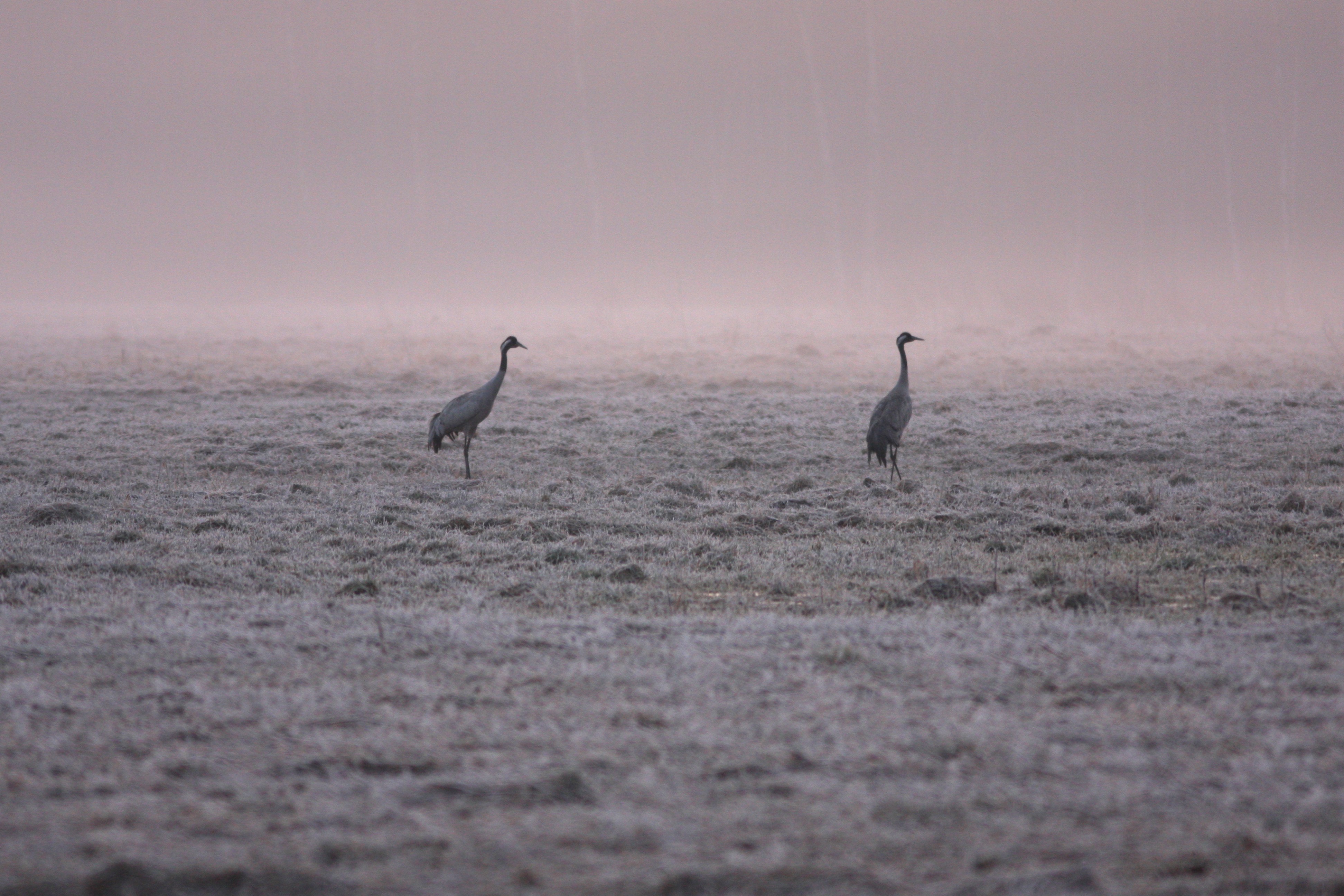
https://commons.wikimedia.org/wiki/File:Hommik_Pusu_soo_%C3%A4%C3%A4rsel_heinamaal.jpg
The current Pusu swamp used to be far away in Russia. It was awfully hot there, and the swamp king didn't like it. He raised the swamp under the sky and rowed it to the present place.
Praegune Pusu soo olnud vanasti kaugel Venemaal. Sääl olnud kole pala1. See ei meeldinud sookuningale. Ta tõst soo üles taeva alla ja sõudnud praegusse kohta.
1 palav
In the old days, one of the ditches by big Pusu swamp was bridged over. A footbridge was an important crossing point in the summer. In the evening or at night, no one dared to cross the ditch, because they were afraid of the water spirit. No one remembers who built the footbridge. One brave young man went to the ditch in the evening. He saw that there was a great light on the bridge and strange creatures were dancing. They were completely black and looked like oven forks.
A large frog-like creature sat in the centre of the bridge, with a big crown on its head. This animal was the king of the swamp. Now the man was getting scared and he started to run. Screams and rumblings could be heard from the bridge. The next day the bridge had disappeared. Later, they wanted to build a new bridge, but this failed, because the bridge built during the day disappeared during the night.
Suure Pusu soo ääres ühest kraavist läks vanasti üle purre. Purre olnud suvel tähtis ülekäigu koht. Õhtuti ega öösi ei julend keegi säält üle minna, sest kardeti vetevaimu. Keegi ei mäleta, kes selle purde ehitas. Üks julge noormees läind õhtul kraavi äärde. Näind, et purdel olnud suur valgus ja tantsind imelikud elukad. Nad olnud täiesti mustad ja ahjuharkide sarnased.
Kesk purret istus suur konna sarnane elukas, peas suur kroon. See loom oli sookuningas. Nüüd hakand mehel hirm, ta pist jooksma. Purdelt kost kisa ja raginat. Teine päev oli purre kadund. Pärast tahetud uut purret ehitada, aga see ebaõnnestus, sest ööse kadus päeval ehitatud purre ära.
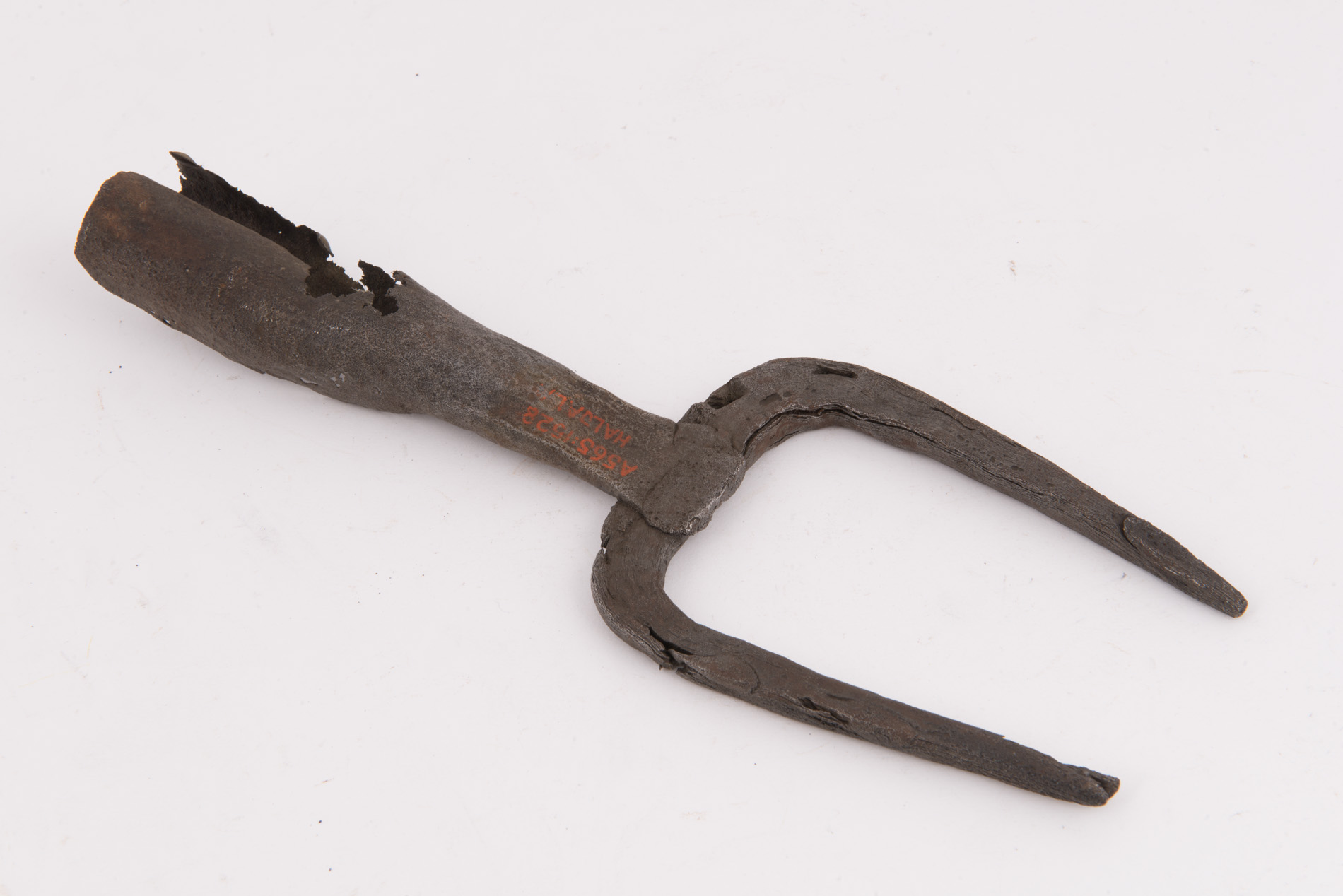
In Lümati used to be a big forest, and in this forest there was a large and boggy swamp. The path passed through the swamp, and on the other side, there was a big stone by the road. A person in white clothes was seen by this stone every evening and at night. When the figure saw that someone was passing with a pack or bundle, it shouted: "Put it down!" And if they didn’t put their bag down, or they hadn't read the "Our Father" prayer, then that person would immediately disappear.
Once an old maid went to the village to take spun yarn. The spirit came again and said:
"Put down what you have there".
The maid said: "I won't put down my bag, but you yourself can go to the wolves."
And since then the maid has been missing. She has indeed been much looked for, but not found anywhere. Later, a piece of the old maid's clothes was found there by the stone. People said that there are evil spirits who have already taken many people away.
Lümatis olnud enne suur mets ja selles metsas oli suur ja mäda soo. Sealt soost käinud tee läbi. Soo teisel poolel tee ääres olnud üks suur kivi ja selle kivi juures nähtud iga õhtu ja öösi valges riides inimest. Ja kui see nähnud, et keegi läheb sealt mingisuguse kombsuga läbi, siis hõiganud see inimene, et: "Pane maha!". Ja kui ei ole pannud kompsu maha ehk jälle ei ole lugenud "Meie isa" palvet, siis olema kohe see inimene kadunud.
Kord lähnud üks vanatüdruk külla ketrust viima. Jälle tulnud vaim vastu ja öelnud, et:
"Pane maha, mis sul seal oln."
Tüdruk ütelnud: „Ei mina küll pane oma kompsu maha, vaid sa ise võid saada hundale.“
Ja sest ajast jäänud tüdruk kadunuks. Küll käidud otsimas, aga ei ole kuskilt leitud. Pärast leitud sealt kivi juurest vanatüdruku riiete tükike. Inimesed rääkinud, et need on kurjad vaimud, kes on juba palju inimesi ära viinud.
Once It was told that the children had gone to the Karussoo – "Bear bog" – on Shrove Tuesday to slide on the ice. While playing happily, they heard a loud shout from the bog: "Vastla vigla!" ('Shrove Tuesday’s dung forks'). The children were scared and ran home. At home, they said that the voice came as if from above. Since then, the children no longer went there to slide.
Karussoo lähedale olla läinud lapsed vastlapäev liugu laskma. Lõbusalt mängides kuulnud soost kõva hüüdu: „Vastla vigla!“ Lapsed ehmunud ja jooksnud koju. Kodus kõnelenud nad, et hääl kostunud nagu ülevalt. Sellest ajast ei läinud lapsed enam sinna liugu laskma.
Joosep from Kivitäri farm used to go to the herd when he was young. One day a cow became lost. After looking for a while, Joosep's mother ordered the boy to run and check the Labasaare bog again. Joosep went and at the edge of the bog, the boy saw Tõõsik – that was the name of the cow – standing in the bog. That the bog was really swampy, and that the cow didn't sink into the bog seemed strange. The boy didn't dare to go into the bog, but still started calling: "Tõõso, Tõõso!" Tõõso didn't take any notice but started walking along the bog, and so Joosep did too. The animal slowly walked, and Joosep ran, but could not catch up.
After running for a while, Joosep heard his mother shout: "Joodso uu! Tõõsik caught!”. The boy thought: how could Tõõsik be at home when he saw him here in the bog, but he still went home anyway. At home, he found Tõõsik eating outside. Joosep himself has confirmed each time that he clearly saw Tõõsik in the bog.
Kivitäri Joosep noores eas käinud karjas. Ühel päeval kadunud üks lehm ära. Tükk aega otsitud. Käskinud Joosepi ema poisil veelkord Labasaare soo poole vaatama joosta. Joosep läinud. Soo ääres näinudki poiss, kuidas Tõõsik, nii oli lehma nimi, seisnud soos. Et soo oli õige mäda ja et lehm sohu ei vajunud, paistis imelikuna. Poiss ei julgenud sohu minna, vaid hakkas kutsuma, ikka "Tõõso, Tõõso!" Tõõso ei teinud sellest väljagi ning hakkas mööda sood edasi kõndima, poiss ka ühes. Loom kõndis aegamisi, aga Joosep jooksis, kuid ette ei saanud.
Tükk aega jooksnud, kuulis Joosep, kuidas ema hõikas: „Joodso uu! Tõõsik käeh!“ Poiss mõtelnud, et kuidas saab Tõõsik kodus olla, kui teda ise näeb siin soos, aga ta läinud siiski koju. Kodus leidnutki ta Tõõsiku õues söömas. Joosep ise kinnitanud iga kord, et ta näinud selgesti Tõõsikut soos.
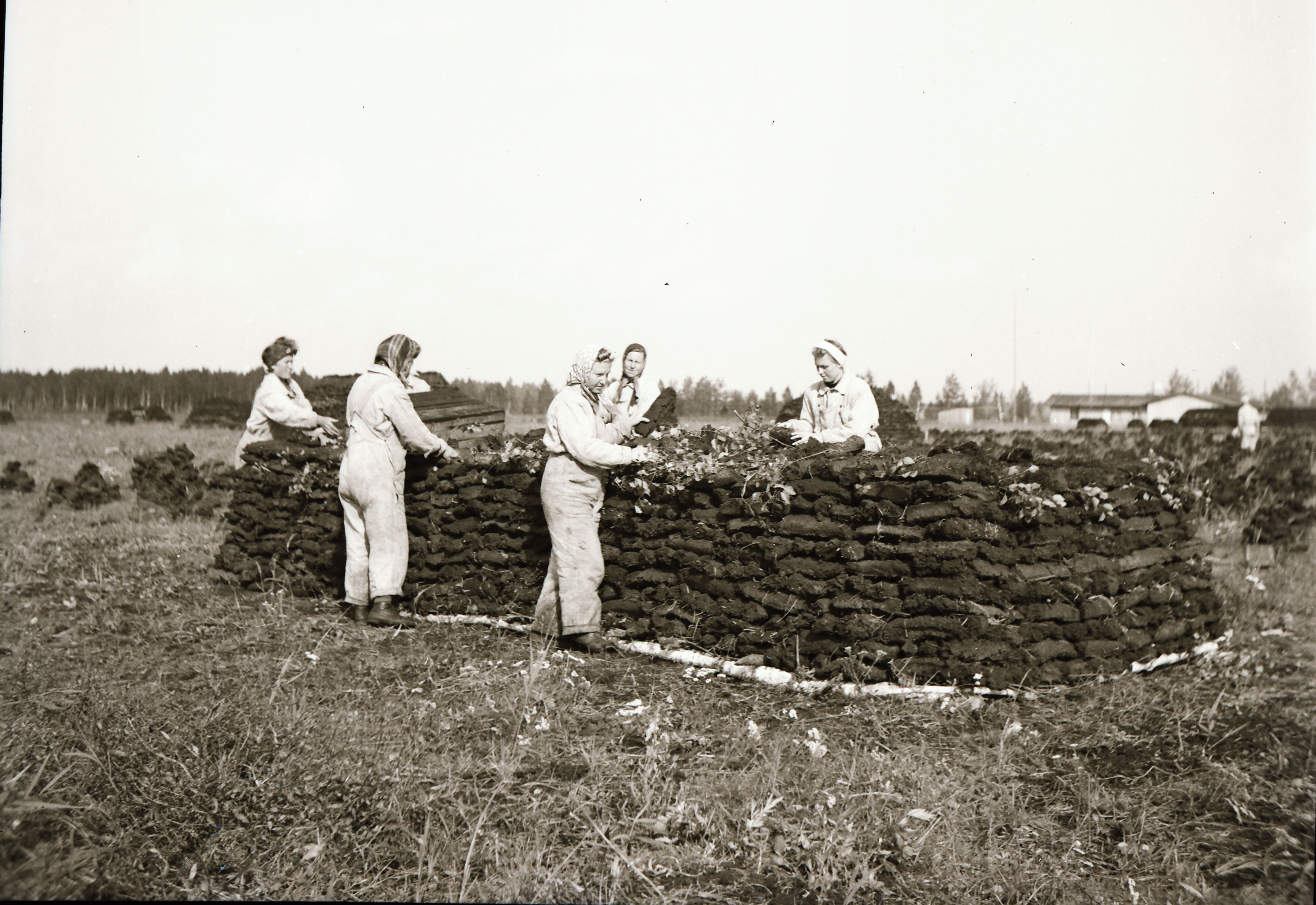
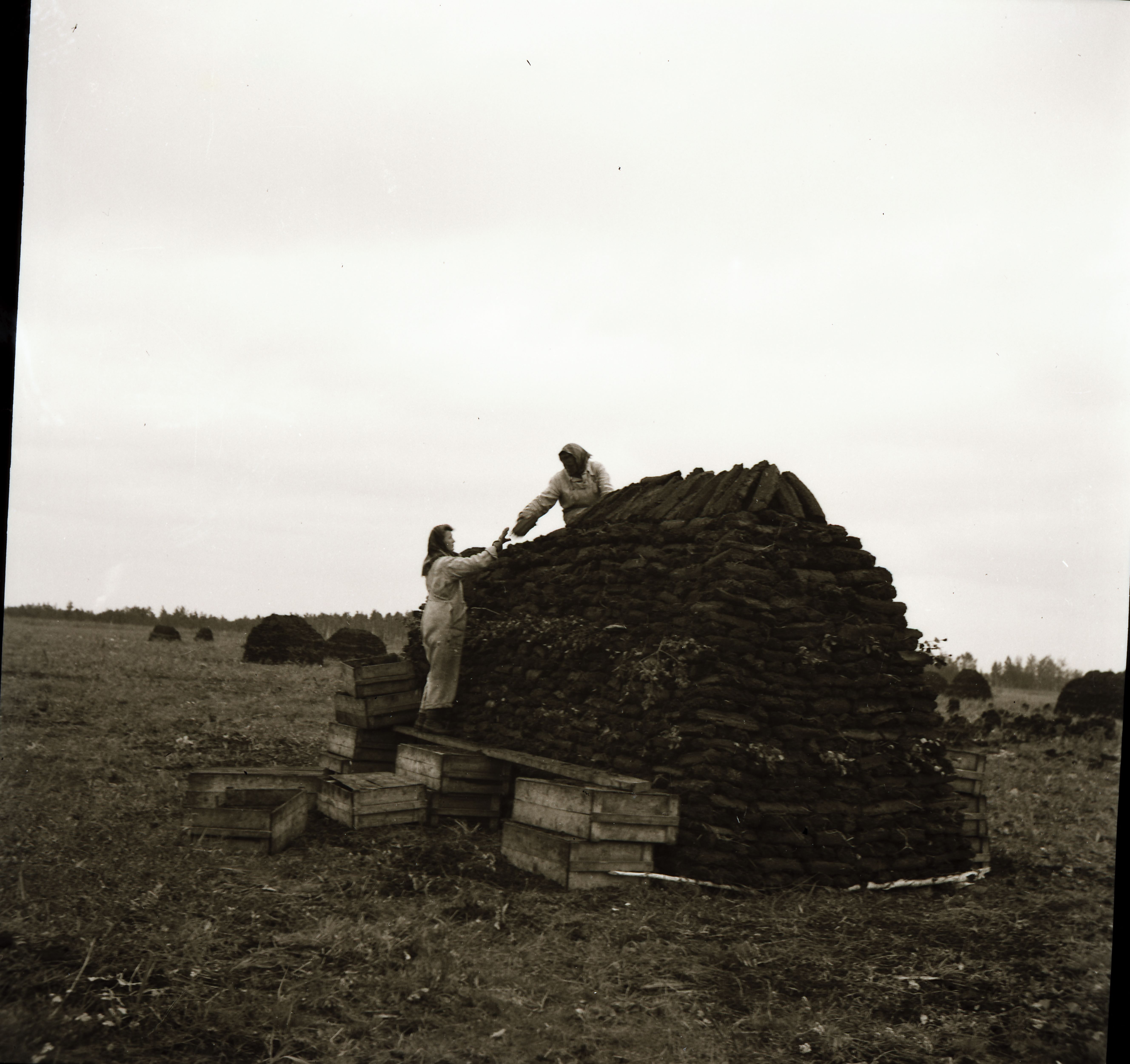
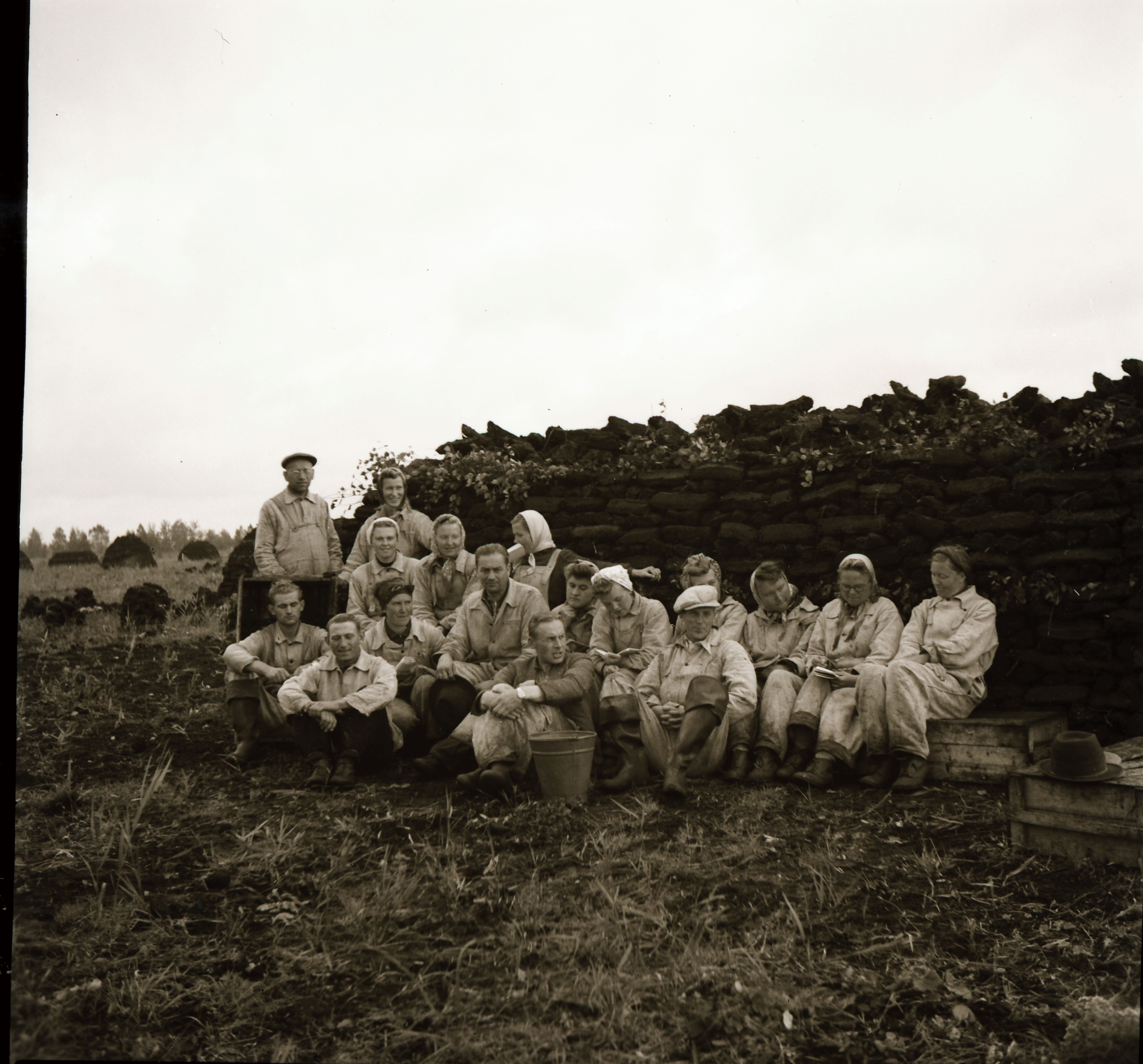
A large castle in the bog of the current Uimula farm – formerly Küünimäe – was home to some priests. When they fled during the Northern War, they spilled their wealth into the bog, where over time it sank into the ground.
This may also be partly true, because two old-fashioned beer jugs were found in the bog during cultivation.
Endise Küünimäe ja praeguse Uimula talu soos asunud suur loss, milles elanud preestrid. Need Põhjasõja ajal põgenedes kaudanud oma varandused soosse, kus nad aja jooksul maasse vajunud.
See võib olla ka osalt õige, sest soo harimisel leiti säält kaks vanaaegset õllekannu.
Laugassoo – “Bog-pool swamp” – is on the Veisjärve lake side of Lõve municipality, and has been famous since ancient times. The swamp itself is so bottomless that a stranger cannot escape with his life if he chances there, because the bog-pools are so deep that both people and animals sink headlong into them, and moreover so deep that nothing can be found when searching in the pools, because no stick nor pole reaches the bottom of the bog-pool.
But some local people who know the paths go there to look for gooseberries, and far inside the swamp, there are still caves where people escaped during the war and plague.
Even after the war, some people escaped into hiding from the landlord’s anger. And those who knew the shelters of Laugassoo and were familiar with the paths, have never spoken to the manor about it. And that's why the manor couldn't catch the fugitive from the shelters, because they didn't know where he had run, and the fugitive could live there for a long time, if his friends took him food.
The oldest people remembered that there was a very wise old man whose existence was known only to those few people who knew the paths of Laugassoo. People had come to him from far away – under the guidance of the experts who still lived near the swamp - looking for help for their own problems as well as for their animals.
But once, when a farmer went to look for medicine for his sick child, he couldn't find the old man anymore. Either he had accidentally sunk into the swamp-pool or, feeling the approach of his own death he himself, before his last breath, buried himself in the swamp so that he wouldn't be eaten by birds. Certainly since then the wise old man has been missing.
Lõve vallast Veisjärve pool on vanast ajast kuulsaks saanu Laugassoo. Soo ise on nõnda põhjatu, et võõras inimene sinna sattudes enam eluga ei pääse, sest soolaukad on nõnda sügavad, et nii inimene kui loom sinna ülepea sisse vajub – ja pealegi nõnda sügavale, et laugastest otsides midagi ei leia, sest laukapõhja ei ulata ükski roigas ega teivas.
Aga mõned kohalikud inimesed, kel teerajad teada, käivad seal kuremarju1 otsimas. Ja kaugel soo sees on veel praegugi alles koopad, kus sõja ja katku ajal inimesed paos olnud.
Isegi pärast sõda on mõned inimesed mõisa viha eest sinna pakku jooksnud. Ja need, kellele Laugassoo varjupaigad olid teada ja teerajad tuttavad, ei ole sellest kunagi mõisale kõnelnud. Ja sellepärast ei saanud mõis põgenejat kätte, et ei teadnud, kuhu ta oli jooksnud, ja pageja võis seal kaua elada, kui sõbrad aga talle söögipoolist järgi viisid.
Kõige vanemad inimesed mäletasid, et seal koobastes oli veel teoorjuse ajal üks õige tark vanamees elanud, kelle olemasolust teadnud ainult need üksikud, kel Laugassoo rajad teada. Ja tema juures olid inimesed kaugelt käinud – ikka soo lähedal elavate teadjate juhtimisel – nii enda kui loomade hädade vastu abi otsimas.
Aga ükskord, kui üks peremees jälle läinud oma haigele lapsele rohtu otsima, ei ole ta vanameest enam leidnud – kas oli ta nüüd kogemata laukasse vajunud või enda surma lähenemist tundes end ise, enne oma viimset hingetõmmet, mõnda laukasse matnud, et mitte lindude söögiks jääda, aga sest ajast saadik jäigi tark vanamees kadunuks.
1 jõhvikaid
On the plot of the farmer Tanel Tiruli, at Suuresoo village in the municipality of Misso, there is a large bog. There is a high round island in this bog, which is still called Pritsu island. Prits Maasing is said to have made fake money there in the old days – back when club money1 was made from calfskin. There had been two together – one had tanned the skins and the other turned them into money. A hut of branches was built on the island and that's where they did it. A stamp was scratched on the limestone, molten tin was cast upon it, and thus a stamp with the national coat of arms was completed, which could be pressed onto the skin. It was a money making machine. This person who told me about it had himself seen the limestone on which these numbers were cut.
And this Prits Maasing had been a relative of the late Vastseliina pastor, but this story had happened when the late pastor's father was himself still a pastor in Vastseliina. When he had found out what Prits was doing, he was ordered by the court to call Prits to him and then hand him over to the court. Prits was ordered to go to the pastor, but he didn't go until the judge was sent to take him there. He had thought of running away meanwhile, but anyway, he did go there afterwards. He had thought: "The teacher is my relative, what is he still doing to me?" He had no idea that they wanted to imprison him. But when he had gone to the pastor, the pastor didn't care at all that he was a relative, but had let him be tied up and taken away to the dungeon. In the end, Prits escaped from prison and started making fake money again.
But that happened in the very old days, when each district still had its own money. These notes were not used elsewhere than in the county town. After escaping from prison, Prits went once to the window of an acquaintance's house at night to ask for a place to stay, but that person would not let him in because he was an escaped prisoner. As he was leaving, Prits allegedly showed him a large wad of paper money through the window and said:
"If you had taken me overnight, you would have had this wad for yourself." The man had thought afterwards: “How stupid was I that I didn't let him stay at the lodge”.
The end.
1 club money – a former unofficial cash note that replaced the legal money; it replaced heavy copper coins and eased local settlements
Misso vallas on Suuresoo küla peremehe Tanel Tiruli krundi sees suur soo. Selles soos on üks kõrge ümmargune saar, mida tänapäevani Pritsu saareks kutsutakse. Seal olevat vanal ajal Prits Maasing valeraha teinud – veel sel ajal kui vasikanahast klubirahasid1 tehti. Nad olid olnud kahekesi. Üks oli nahku parkinud ja teine neid rahadeks teinud. Saare peale oli okstest onn ehitatud ja seal nad tegidki raha. Paekivi peale oli rahatempel kraabitud, sinna peale oli tina valatud, ja nii oli valminud riigivapiga tempel, millega sai naha peale pressida. See oligi rahategemise masin. Seda paekivi, kuhu need numbrid sisse lõigatud, oli see inimene ise näinud, kes mulle asjast jutustas.
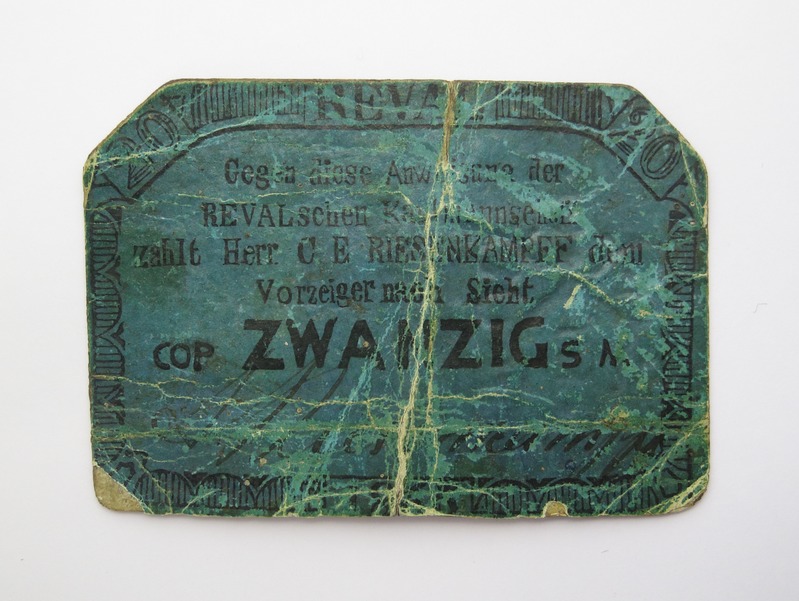
Ja Prits Maasing oli veel kadunud Vastseliina õpetaja sugulane olnud, aga siinne lugu oli siis juhtunud, kui kadunud õpetaja isa veel Vastseliinas õpetajaks oli. Kui ta oli teada saanud, millega Prits tegeleb, siis oli talle kohtu poolt käsk antud Prits enda poole kutsuda ja sealt kohtu kätte saata. Aga siis oli Pritsule käsk antud õpetaja juurde minna. Tema aga enne ei läinud, kui kohtumees järele saadeti, kes pidi ta õpetaja juurde viima. Mees oli küll tee peal mõtelnud ära pageda, pärast oli siiski kohale läinud, oli mõtelnud, et: "Õpetaja on mu sugulane, mis ta mulle ikka teeb". Ta ei osanud aimatagi, et teda taheti vangi panna. Aga kui ta õpetaja juurde oli jõudnud, siis polnud õpetaja väljagi teinud, et ta sugulane oli, vaid lasknud ta kinni köita ja ära türmi viia. Lõpuks oli ta ikkagi türmist ära põgenenud ja hakanud jälle valeraha tegema.
Aga see oli õige vanal ajal olnud, kui veel iga kreisi jaoks ise rahad olid. Neid rahasid mujal ei kasutatud kui kreisilinnas. Pärast vangist põgenemist oli Prits läinud ükskord öösel ühe tuttava poole maja akna alla öömaja paluma, aga see ei tahtnud teda sugugi majja lasta, sest ta oli põgenenud vang. Ära minnes olevat ta näidanud talle läbi akna suurt paberraha patakat ja öelnud:
"Kui sa oleks mind öömajale võtnud, siis oleksid selle pataka endale saanud." Mees oli küll pärast mõelnud, et kuidas ma nii loll olin, et teda öömajale ei lasknud.
Läbi.
1 klubiraha – endisaegne mitteametlik maksetäht; asendas raskeid vaskmünte ja kergendas kohalikke arveldusi
The old folk say that spirits live in the swamp. These spirits, it is alleged, ignite sometimes here, sometimes there, the lights to burn.
One night a man went along a remote road or path through the swamp towards his home. He suddenly saw: the fire is burning quite close. The man thought: "This time I have reached home quite quickly." He went straight to the fire and got pretty close, but all of a sudden, splash! He was a man in a mud pit! He had mistaken the fire in the mud pit for a home fire, and it was only with great difficulty that the man got out of the mud hole.
Vanarahvas räägib, soos elada vaimud. Need vaimud sütitada vahel siin, vahel seal, tuled põlema.
Kord läinud mees kõrvalist teed või rada mööda öösi läbi soo kodu poole. Korraga näinud mees: tuli põleb üsna ligidal. Mees mõtelnud: "Olengi seekord üsna ruttu koju jõudnud." Läinud otse tule poole. Jõudnud üsna ligi. Korraga karrsumm! mees mudaauku. Mudaaugu tuld oli mees koduseks tuleks pidanud. Suurega vaevaga pääsnud mees mudaaugust välja.
Hundimäe – "Wolf Hill" – farm is in Mudiste village, Sürgavere municipality in Viljandi County. Looking down from the hill, about 45 years ago lights were seen on the bog, as if someone was moving with a lantern. Now the part of the bog where the eyes were seen glowing has been turned into a field, and no one has seen the ghost's eyes since. The person who saw the fire was Anu Laos (now Loog), a daughter of the family living in Hundimäe farm.
The lights can still be seen in Kakerdaja bog. It is a large bog with its bottomless pits. In the middle of the swamp is a lake that keeps growing. If you look at the bog, you can see "ghost eyes", sometimes disappearing and then flashing again in other places.
Viljandimaal Sürgavere vallas Mudiste külas Hundimäe talus mäest alla vaadates nähti umbes 45 aastat tagasi tulesid soo pääl, nagu liiguks keegi laternaga. Nüüd on tehtud sootükk, kus nähti silmi hiilgamas, põlluks, ja pääle selle pole enam keegi näinud tondisilmi. Tule nägija oli Hundimäe talus elav peretütar, nimega Anu Laos (nüüdse nimega Anu Loog).
Tulesid võib veel näha Kakerdaja rabas. See on suur raba oma põhjatute laugastega. Keset raba on järv, mis järjest kokku kasvab. Kui rabale vaadades, võib näha "tondisilmi", vahel ära kadudes ja uuesti teistest vilkuma hakates.
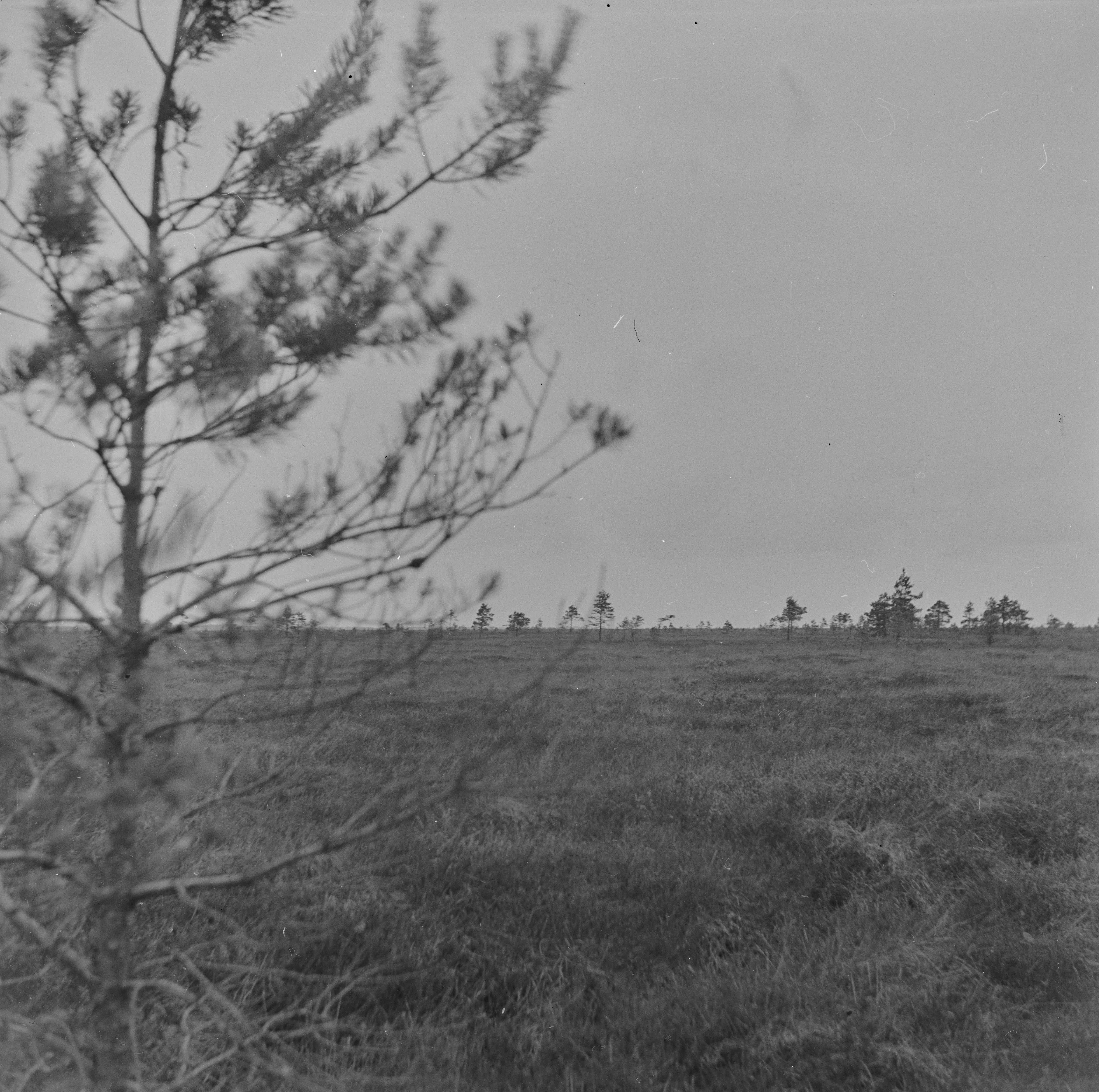
The lights that flash in the bog in the dark have attracted the senses of the viewers for a long time and certainly added to the mystery of the bog. "M. Koger has seen Will-o'-the-wisps burning in several places and thinks that the flame has risen to a height of 40-50 cm [---] In the Völla marsh there is a boggy line, soft, watery" (Loodusvaatleja 1934, 2: 44).
Georg Tamm, son of the family of Sarapuu farm in the settlement of Võlla, has seen Will-o'-the-wisps on the Võlla bog before Christmas. He is around 20 years old, a sober and practical young man. The weather was cloudy. The Will-o'-the-wisps shone with a bluish-green glow" (ibid: 45).
Soos pimedal ajal vilkuvad tulukesed on ammust aega köitnud nägijate meeli ja kindlasti lisanud soole salapära. „M. Koger on näinud sootulukesi leegitsevat mitmel kohal ja arvab leegi kuni 40–50 sm kõrgusele tõusnud olevat [---] Võlla rabas on sellel kohal soine joon, pehme, vesine” (Loodusvaatleja 1934, 2: 44).
“Sootulukesi Võlla rabal on enne jõulu veel näinud Võlla asunduse Sarapuu talu perepoeg Georg Tamm, ligi 20. a. v., kaine ja asjalik noormees. Ilm oli pilves. Sootulukesi paistnud sinakas-roheka helgiga” (Samas: 45).
I asked: "Why can't the marsh lights be seen at other times, but only in the autumn?"
To this I was answered: "Marsh lights are said to be some kind of party lights for the marsh spirits. Someone thought they were the Christmas lights of the swamp spirits, while another thought they were wedding lights."
I don't know for sure what kind of lights they really are.
Küsisin: "Miks ei ole sootulesid muul ajal kui ainult sügisel näha?"
Selle peale vastati mulle: "Sootuled öeldakse soovaimude mingisugused pidutuled olevat. Keegi arvas, need olla soovaimude jõulutuled, teine aga, pulmatuled."
Missugused tuled need tõesti on, ei tea kindlasti.
Every New Year's Eve, the spirit of the swamp comes out and tries to lead travelers astray. The Swamp Spirit has curly black hair with worms inside. If the stray meets him, he must try to cut or tear off the spirit’s hair along with the worms, then he will get on the right path and become rich.
NB. I don't believe the end of the reports are true. How is it conceivable that a stray person cuts off the hair of a swamp spirit? In any case, cutting hair in the text seems very unlikely and is contraband1.
1 contraband; here: a fiction added to the original story, in the opinion of the folklore collector M. J. Eisen.
Iga uue aasta öösi tuleb soost soovaim välja ja püüab teekäijaid eksiteele saata. Soovaimul on käharad mustad juuksed, ussid sees. Kui eksija temaga kokku puutub, peab eksija katsuma soovaimu juukseid ussidega koos peast ära lõigata või ära kiskuda, siis pääseb ta õigele teele ja saab rikkaks.
NB. Ei usu, et teadete lõpp tõele vastab. Kudas on mõeldav, et eksija soovaimu juuksed ära lõikab? Juukselõikamine teates kuulub igatahes konderbandi1 hulka.
1 konterbant; siin: koguja M. J. Eiseni arvates algsele tekstile lisatud väljamõeldis, "salakaup".
Once upon a time there was a young man. He was a keen hunter and used to hunt in the forest and bogs. Once, on a bog or marsh, he happened to see – it was Sunday, the weather was stiflingly hot – that a city stood before him.
Blacksmiths were hammering, bellows blowing. People were standing dumbfounded, both young and old. They were caught, pressed into a sack, set in front of the mouth of the furnace – and then, on the anvil, the old were forged into young, the young old. Then they were let go.
At last, it was the turn of our young hunter. He should have also gone through the fire, the sack, and under the hammer. Trembling with fear, he said: "God, son of the Father, now I have to go this way too."
Then everything disappeared at once, only an indeterminate bog stood around him, and he went home. Since then, he has never gone hunting in the bogs.
Kord olnud üks noor mees. See olnud kange kütt, käinud metsas ja soodes küttimas. Kord juhtunud ühe soo ehk raba peal ta nägema – see olnud pühapäev, ilm olnud pallava1 – et üks linn seisnud ta ees.
Sepad tagunud, lõõtsad vuhisenud. Inimesed seisnud tummalt ja need olnud vanad ja noored. Võetud kinni, aetud koti sisse, pistetud ääsi suu ette ja siis alasi peale; taotud vanad nooreks, noored vanaks. Siis lastud lahti.
Viimaks tulnud kord meie noore jäägri kätte. Tema pidand ka tulest, kotist, haamri alt läbi käima. Hirmuga värisedes ütelnud ta: „Jumal, Isa pojake, nüüd pean ma ka seda teed minema.“
Siis kadunud kõik korraga ära, määratu soo seisis tal ümberringi. Ja ta läinud kodu. Sestsaadist2 iial enam soodesse jahtima läinud.
1 palav
2 sestsaadik
Three great witches lived long ago: Vidu, Tani and Nadi.
Vidu lived on Virussaare – “Viru island”. This island is in the state marsh in the Vee – "Water" – parish, surrounded by an indescribably muddy swamp. The island itself is hard limestone, its edge is bordered by a rampart-like upland. People say that there used to be a city there.
Tani lived on the island of Taidrasaare, about eight versts from Virussaare towards morning1, in the drier marsh, around which again there was a deep and soft swamp.
Nadi lived on the island of Naissaare – "Women island", between these two islands. Taidra- and Naissaar are part of Parasmaa municipality.
The witches made bread at the same time with one broom and a baker’s shovel. When they whistled, the oven broom and the bread shovel went to everyone by themselves.
In the summertime, the witches had ridden a horse across the muddy swamps to visit each other, without the horse ever sinking.
There should still be a lot of the witches’ money left behind in Virussaare, but no one should dig this place, because it is popularly said that the treasure is guarded by a snake king with a number of subordinates. The people have named this place Ussilõugas – “Snake’s creek” – because whenever you go near it, you can see snakes there.
1 towards morning – in the East, according to the compass point
Vanasti elanud kolm suurt nõida: Vidu, Tani ja Nadi. Vidu elanud Virussaares. See saar on Vee valla jaos kroonu rabas, teda ümbritseb ütlemata tüma soo. Saar ise aga on kõva, paekaljuline, ääri piirab vallimoeline kõrgustik. Rahvas räägib, et vanasti olnud seal linn.
Tani elanud Taidrasaares, arvata umbes kaheksa versta Virussaarest hommiku pool raba sees, mille ümber jälle tüma soo on. Nadi elanud Naissaares, nende kahe saare vahel. Taidra- ja Naissaar on Parasmaa valla jaos.
Ühe luua ja lasnaga1 teinud nad korraga leiba. Vilistamise peale tulnud ahjuluud ja leivalasn iseenesest igaühe juurde.
Hobusega sõitnud nad ratsa suveajal üle tümade soode üksteisele võõraks, ilma et hobune oleks sisse vajunud. Virussaares pidavat veel hulk raha neist järel olema, aga keegi ei tohi seda kohta kaevata, sest rahvasuus on jutt, et seda varandust pidavat üks ussikuningas hulga alamatega valvama. Rahvas on sellele kohale nime pannud Ussilõugas, sest igal ajal, kui sinna ligi minnakse, on seal usse näha.
1 lasn – leivalabidas



